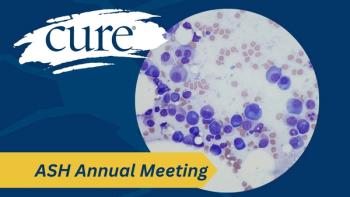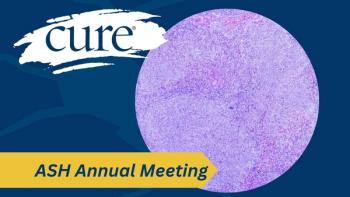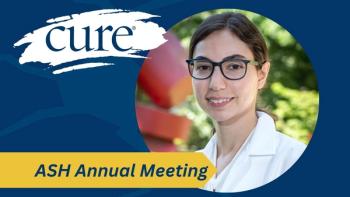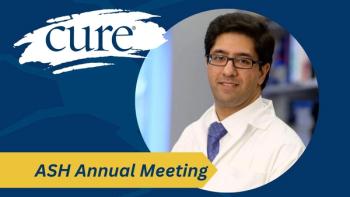
Understanding Your Stage 2 Lymphoma Diagnosis
Key Takeaways
- Stage 2 lymphoma is localized, affecting lymph nodes or a single extranodal site on one diaphragm side, with a favorable prognosis.
- Diagnosis involves biopsies, blood tests, and imaging to confirm subtype and stage, crucial for treatment planning.
Stage 2 lymphoma is treatable. Diagnosis and treatment depend on subtype, but most patients achieve excellent outcomes with modern therapies.
Receiving a diagnosis of stage 2 Lymphoma is a major life event, and it's perfectly normal to feel a mix of emotions. This information is designed to be a framework for a thorough discussion with your hematologist-oncologist, who will customize every aspect of your care.
What is Stage 2 Lymphoma? Types and Prognosis
Lymphoma is a cancer that begins in the lymphocytes, a type of white blood cell that is part of the immune system. It primarily affects the lymph nodes, but can also involve other organs.
- Lymphoma Types: The approach to stage 2 disease depends heavily on the specific type of lymphoma:
- Hodgkin Lymphoma (HL): Generally has a very high cure rate, even in later stages.
- Non-Hodgkin Lymphoma (NHL): This is a diverse group. Treatment depends on whether the lymphoma is aggressive (fast-growing, like Diffuse Large B-Cell Lymphoma or DLBCL) or indolent(slow-growing, like Follicular Lymphoma).
- Staging Definition: Stage 2 is considered early stage or localized disease, meaning the cancer is found in:
- Two or more lymph node groups;
- or in a single area outside the lymph nodes (extranodal site, marked as Stage IIE);
- and all these affected areas are located on the same side of the diaphragm (the muscle separating the chest and abdomen).
- Prognosis: Stage 2 lymphoma is highly treatable. For many types, especially Hodgkin Lymphoma, the outlook is excellent with current treatment protocols. Your specific prognosis will be discussed with your oncologist based on the type, your age, and other prognostic factors.
How Stage 2 Lymphoma is Diagnosed
The diagnostic process aims to not only confirm the presence of lymphoma but also to classify the exact subtype and determine the precise stage.
- Biopsy (The Key Test): This is the only way to definitively diagnose lymphoma. A surgeon or radiologist will remove an entire or part of an enlarged lymph node (excisional or core needle biopsy). A hematopathologist then examines the tissue to identify the cancer cells and their specific characteristics (e.g., presence of Reed-Sternberg cells for HL).
- Blood Tests: These tests check for general health, blood cell counts, kidney and liver function, and specific markers like Lactate Dehydrogenase (LDH), which can be elevated in aggressive lymphomas.
- Imaging Tests (Staging):
- PET/CT Scan: This is the standard staging tool. A Positron Emission Tomography (PET) scan uses a radioactive glucose tracer to highlight all areas of the body where cancer cells are actively consuming sugar, combined with a Computed Tomography (CT) scan for anatomical detail. This is used to confirm the exact location and extent of the disease (stage 2).
- Bone Marrow Aspiration and Biopsy: This procedure, typically taken from the hip bone, checks whether lymphoma cells have spread to the bone marrow, which is crucial for staging and treatment planning.
- Assessment for B Symptoms: Your doctor will ask about symptoms like unexplained fever, drenching night sweats, or unexplained weight loss (loss of $>10\%$ body weight in 6 months). The presence of these (B symptoms) is an important prognostic factor and may influence treatment intensity (e.g., stage 2a vs. stage 2b).
Stage 2 Lymphoma Treatment Options
The treatment strategy for stage 2 lymphoma depends heavily on the specific subtype (HL or NHL) and whether it is considered "favorable" or "unfavorable" based on tumor size and other risk factors.
1. Chemotherapy
Chemotherapy is the foundation of treatment for most aggressive and many intermediate-risk lymphomas.
- Hodgkin Lymphoma (HL): The standard regimen is typically ABVD (a combination of four drugs: Adriamycin, Bleomycin, Vinblastine, Dacarbazine). Treatment usually lasts for a few cycles.
- Non-Hodgkin Lymphoma (NHL, Aggressive): The most common regimen is R-CHOP (Rituximab, Cyclophosphamide, Hydroxydaunorubicin, Oncovin/Vincristine, Prednisone). Rituximab is an immunotherapy (a monoclonal antibody) that targets a protein ($CD20$) on B-cells, which are often the source of NHL.
2. Radiation Therapy (Radiotherapy)
Radiation uses high-energy rays to kill cancer cells in a specific, localized area.
- Role in Stage 2: For many stage 2 lymphomas, especially favorable Hodgkin Lymphoma or smaller-area aggressive NHL, a short course of chemotherapy followed by Involved-Site Radiation Therapy (ISRT)—targeting only the initial tumor areas—can be highly effective, sometimes reducing the total amount of chemotherapy needed.
- Goal: To eliminate any remaining cancer cells in the treated area and reduce the chance of recurrence.
3. "Watch and Wait"
For some very indolent (slow-growing) stage 2 Non-Hodgkin Lymphomas (like certain Follicular Lymphomas) that are not causing significant symptoms, your oncologist may recommend a "watch and wait" approach. This involves regular monitoring until treatment becomes medically necessary, avoiding immediate side effects.
Managing Side Effects of Lymphoma Treatment
Modern lymphoma treatments are often highly effective, but they do come with side effects. Managing these is a crucial part of your overall care.
“Persistent fatigue is a highly prevalent, complex and very distressing late effect after cancer,” Dr. Synne-Kristin Bøhn, of the department of oncology at The Norwegian Radium Hospital, Oslo University Hospital in Oslo, Norway, stated in the interview with CURE. “We know that psychological interventions and exercise can help to relieve fatigue, but there are few studies that have included populations that actually are screened for fatigue at study inclusion.”
Side Effects
- Common Short-Term Effects (Chemotherapy):
- Fatigue: Feeling severely tired is very common.
- Blood Counts: Decreased blood cell production can lead to anemia (low red blood cells, causing tiredness), neutropenia (low white blood cells, increasing infection risk), and thrombocytopenia(low platelets, increasing bruising/bleeding risk).
- Gastrointestinal: Nausea, vomiting (usually well-controlled with medication), and changes in bowel habits.
- Hair Loss: Common with most standard chemotherapy regimens.
- Specific Drug-Related Effects:
- Peripheral Neuropathy: Drugs like Vincristine can cause numbness, tingling, or pain in the hands and feet. Report this immediately to your team.
- Cardiac/Heart Toxicity: Certain drugs (like Doxorubicin in ABVD/R-CHOP) can potentially affect the heart. Your doctor will monitor your heart function before and during treatment.
- Pulmonary Toxicity: Bleomycin (in ABVD) can, rarely, cause lung damage. Your lung function will be monitored.
- Long-Term and Late Effects: Treatment for lymphoma, while curative, can have effects that persist or appear years later. These include:
- Secondary Cancers: A slight increased risk of developing another cancer decades later.
- Infertility: Chemotherapy can affect fertility. If future family planning is important to you, you must discuss fertility preservation options with your oncologist before starting treatment.
Next Steps After Your Stage 2 Lymphoma Diagnosis
A diagnosis of stage 2 Lymphoma is one that carries an excellent prognosis for many patients, thanks to highly effective, modern treatment protocols. You are starting a journey where the most important thing is open communication with your care team.
Key Questions to Discuss With Your Oncologist:
- Lymphoma Subtype and Prognosis: What is my exact type of lymphoma (e.g., DLBCL, Classical HL), and is it considered favorable or unfavorable?
- Treatment Protocol Details: What specific chemotherapy regimen and how many cycles will I receive, and will radiation be part of the plan?
- Fertility and Long-Term Effects: What are the risks to my long-term health, and what steps should we take now for fertility preservation or heart/lung monitoring?
- Side Effect Management: What prescription medications will I receive to control nausea, and what are the specific warning signs for infection I should watch for?
Stay informed, ask every question that comes to mind, and trust the plan your multidisciplinary team develops for you.
Editor’s Note: This guide is designed to be a starting point. Your personal experience will be unique. By using this information as a foundation for your discussions, you can partner with your oncologist to make the best decisions for your health.
For more news on cancer updates, research and education,





